Antarctica research and discussion topics
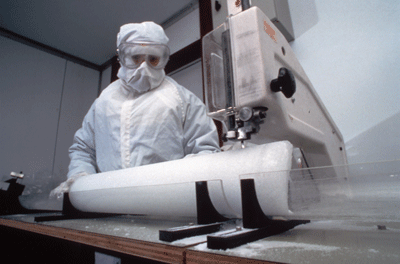
The review is based on the latest evidence from 100 scientists in 13 countries.
It discusses the impact of climate change on Antarctica's plants and animals.
The review documents the recent rise in carbon dioxide levels and the connection between human-caused climate change and natural variability.
It reports on the surprising discovery that the ozone hole has shielded most of Antarctica from global warming.
Antarctica is a wonderful source of information about our planet.
One man-made environmental impact – the ozone hole – has shielded most of Antarctica from another – global warming.
There is no doubt that our world is changing and that human activity is accelerating global change.
As a result there has been little change in surface temperature over much of the Antarctica for 30 years
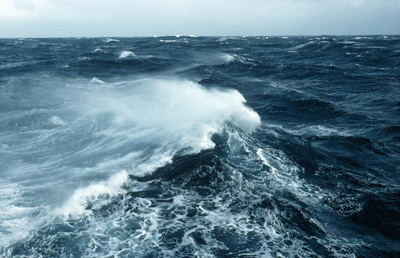
But increasing winds have made the ocean less able to absorb carbon dioxide.
Plant, animal and microbe communities have exploded in the newly available land.
Overall 90% of the Peninsula's glaciers have retreated in recent decades.
But most of the Antarctic ice sheet has shown little change.
This shows that the continent is highly sensitive to even small climate changes.
The ozone hole is expected slowly to heal.
The predicted warming of about 3°C across the continent is not enough to melt the main ice sheet.
Loss of ice from the West Antarctic ice sheet is likely to contribute tens of centimetres to a predicted global sea level rise of 1.4 metres by by 2100.
They need to be monitored in much greater detail.

4 December 2009
The coolest continent
A major review of the science of Antarctica has just been published.
Antarctic Climate Change and the Environment presents the latest findings, suggests future research, and tackles questions of melting, sea-levels and biodiversity.
The review is based on the latest evidence from 100 scientists in 13 countries. It looks at the effects of rapid warming of the Antarctic 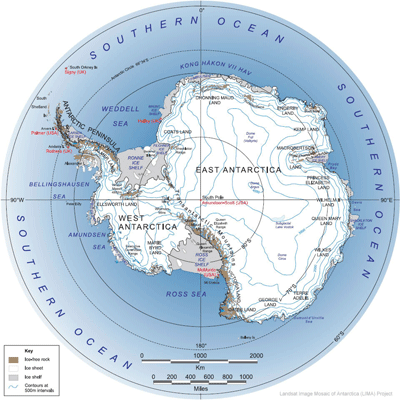 Peninsula and the Southern Ocean. It examines ice loss and gain around the continent. It discusses the impact of climate change on Antarctica's plants and animals.
Peninsula and the Southern Ocean. It examines ice loss and gain around the continent. It discusses the impact of climate change on Antarctica's plants and animals.
The review documents the recent rise in carbon dioxide levels and the connection between human-caused climate change and natural variability. It reports on the surprising discovery that the ozone hole has shielded most of Antarctica from global warming.
Humans or nature?
Antarctica is a wonderful source of information about our planet, says Dr. Colin Summerhayes, executive director of the Scientific Committee on Antarctic research. "This review describes what we know and illustrates how human activity is driving rapid climate change."
By pulling together evidence from many sciences, he says, the report will help people understand the difference between natural climate change and that caused by humans. "The work is important because it puts Antarctic climate change in context and reveals the impact on the rest of the planet."
Two wrongs
The most astonishing evidence, says Professor John Turner of British Antarctic Survey, shows that one man-made environmental impact – the ozone hole – has shielded most of Antarctica from another – global warming. "Understanding the complexities surrounding these issues is a challenge for scientists. And communicating them in a meaningful way to society and to policymakers is essential.
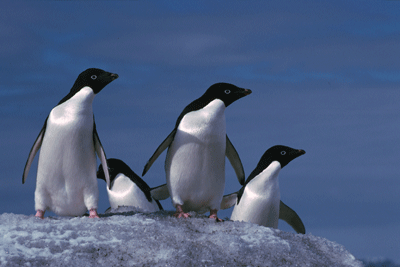
"There is no doubt that our world is changing and that human activity is accelerating global change."
In brief
The full report can be found here.
A summary of its findings is contained in these 10 key points:
1. Hole in ozone layer
The ozone hole has delayed the effect of greenhouse gases on the Antarctic. It has made the south polar winds grow stronger. This has isolated the continent from warming elsewhere on Earth. As a result there has been little change in surface temperature over much of the Antarctica for 30 years - except for the east coast of the Antarctic Peninsula, which has seen rapid warming.
2. Ecosystem changes
The largest ocean current on Earth is the Antarctic Circumpolar Current. This has warmed faster than the global ocean. The Southern Ocean is one of the major sinks of carbon dioxide from the atmosphere. But increasing winds have made the ocean less able to absorb carbon dioxide. If temperatures continue to rise 'alien' species may migrate into the region. Changes in food chains will cause losses in the rich seabed biodiversity.

3. Rapid increase in plant communities
Rapid warming has been seen along the western Antarctic Peninsula. There has been a switch from snow to rain in summer. Plant, animal and microbe communities have exploded in the newly available land. Humans have also introduced 'alien' organisms such as grasses, flies and bacteria.
4. Rapid ice loss
The West Antarctic Ice Sheet has thinned as a result of warmer ocean temperatures. Regional warming caused by stronger westerly winds (due to the ozone hole) is melting ice shelves along the eastern Antarctic Peninsula. Overall 90% of the Peninsula's glaciers have retreated in recent decades. But most of the Antarctic ice sheet has shown little change.
5. Increase in sea ice
Since 1980 there has been a 10% increase in Antarctic sea ice, particularly in the Ross Sea region, as a result of the stronger winds around the continent, due to the ozone hole. But sea ice has reduced west of the Antarctic Peninsula.
6. Carbon dioxide rising fast
Levels of carbon dioxide and methane in the atmosphere are higher than in the last 800,000 years. They are increasing at rates unlikely to have been seen in the geologically recent past. Small-scale climate variability in the last 11,000 years has caused rapid ice loss, shifts in winds and ocean currents and changes in plant and animal populations. This shows that the continent is highly sensitive to even small climate changes.
7. Krill and penguins
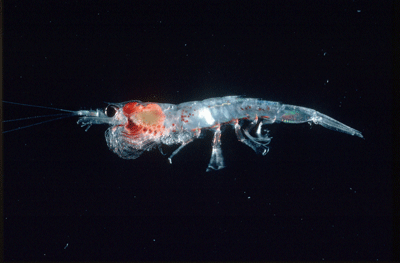
Loss of sea ice west of the Antarctic Peninsula has caused changes in the growth of algae, and a shift from large to smaller species. Stocks of krill have fallen. In some areas Adélie penguin populations have fallen due to reduced sea ice and prey species. Past exploitation of seals and whales has changed the ecosystem, reducing scientists' ability to understand the effects of climate change on krill and other species.
8. Antarctica will warm by 3°C
The ozone hole is expected slowly to heal. The full effects of greenhouse gas increases will then be felt across the Antarctic. Models suggest that a third of sea ice will be lost. This will cause phytoplankton levels to rise. The predicted warming of about 3°C across the continent is not enough to melt the main ice sheet.
9. Sea level rise
Loss of ice from the West Antarctic ice sheet is likely to contribute tens of centimetres to a predicted global sea level rise of 1.4 metres by by 2100.
10. Better models
Climate variability in the Polar Regions is greater than in other parts of the world. Yet these remote regions are sparsely sampled. They need to be monitored in much greater detail. This will allow us to detect changes. It will improve our understanding and help distinguish between natural climate variability and that caused by humans. A detailed understanding of past climate is also crucial for understanding this - as are improved climate models.
Scientific Committee on Antarctic research is the main body dealing with the international coordination of scientific research in Antarctica and the Southern Ocean.
British Antarctic Survey delivers interdisciplinary research in the Polar Regions.
More help with words
| assessment | breed | community | contributes | crustacean |
| decay | environment | fertile | fossil fuels | fossilized |
| microscopic | ozone | plankton | preserved | survey |
